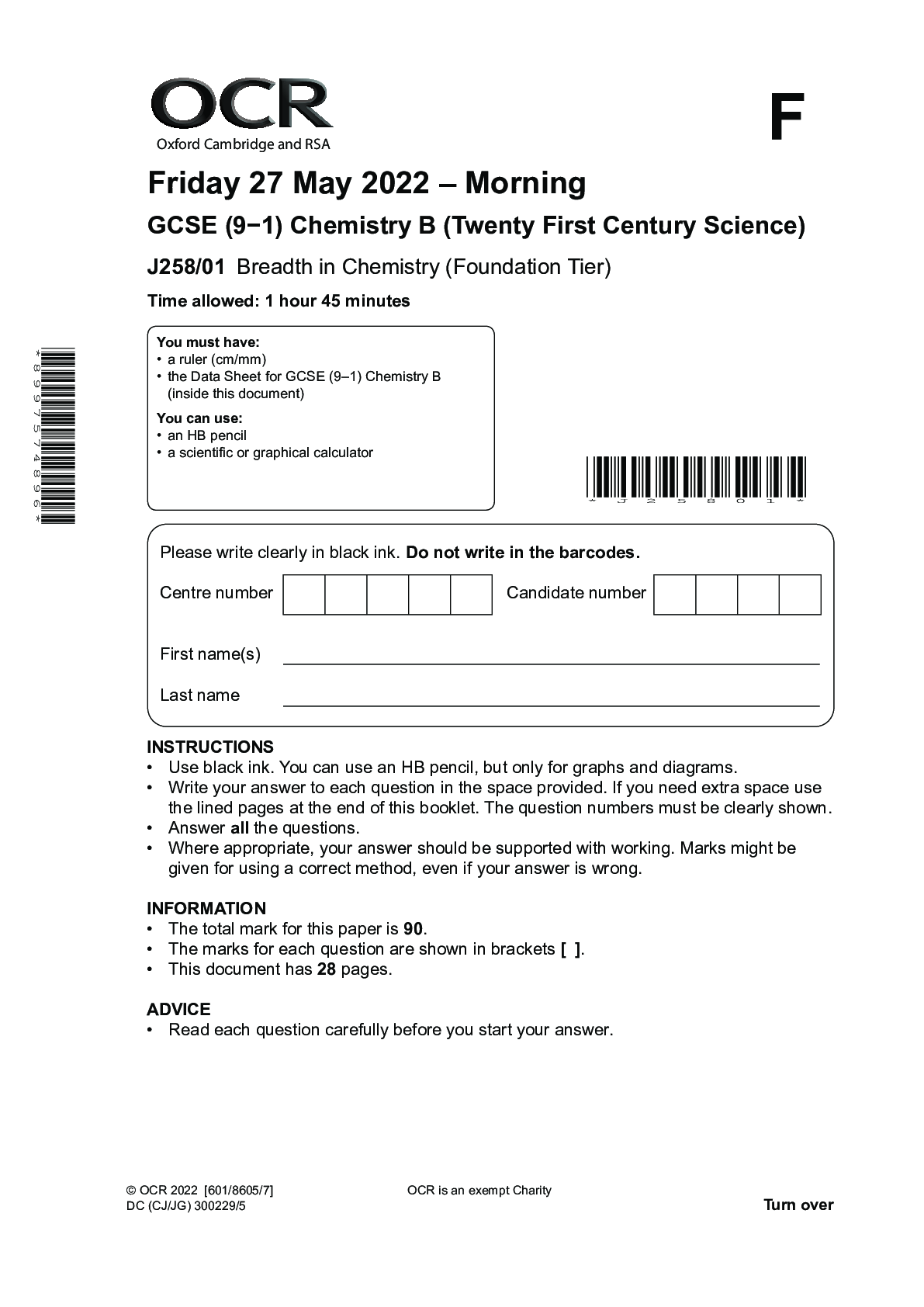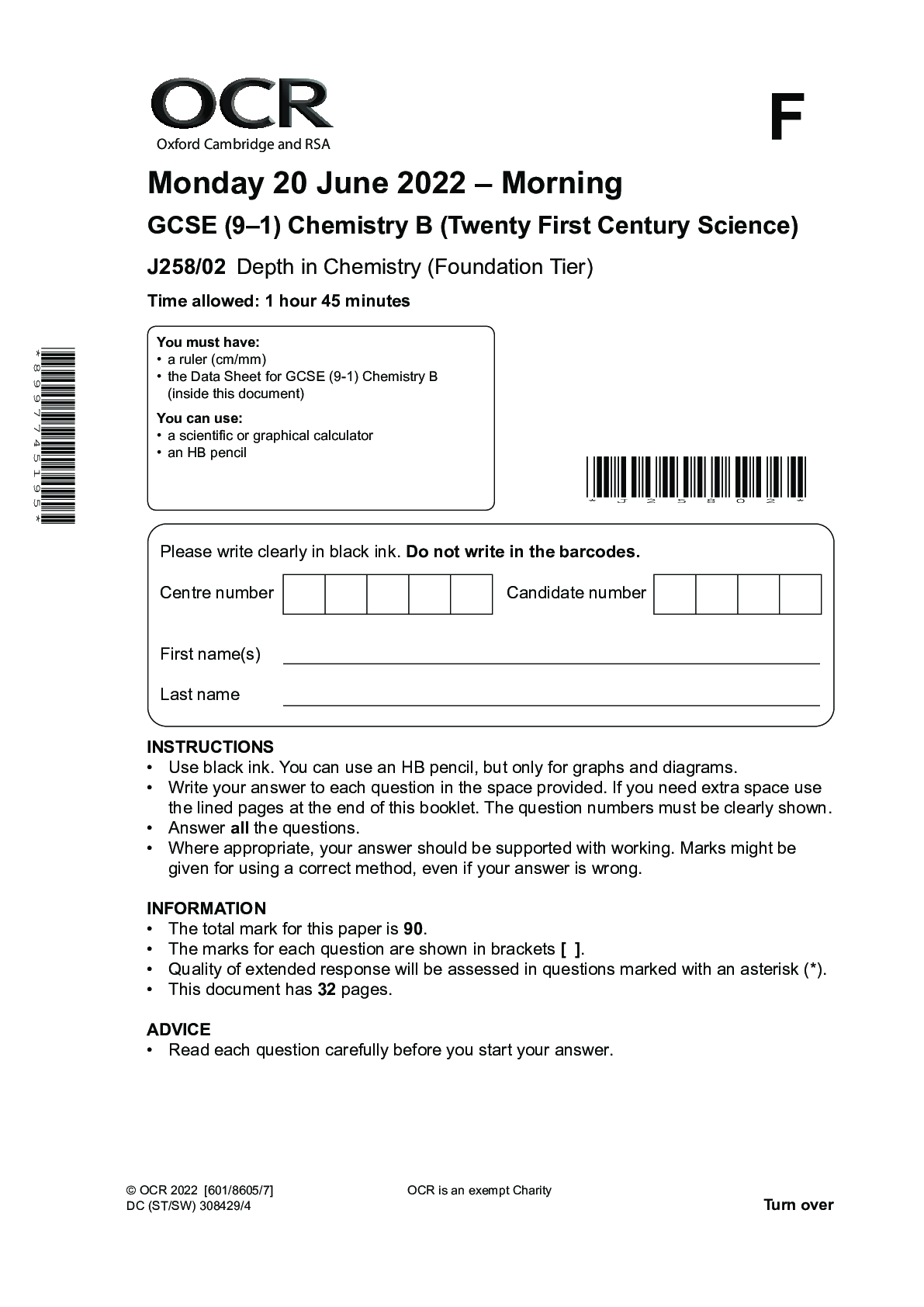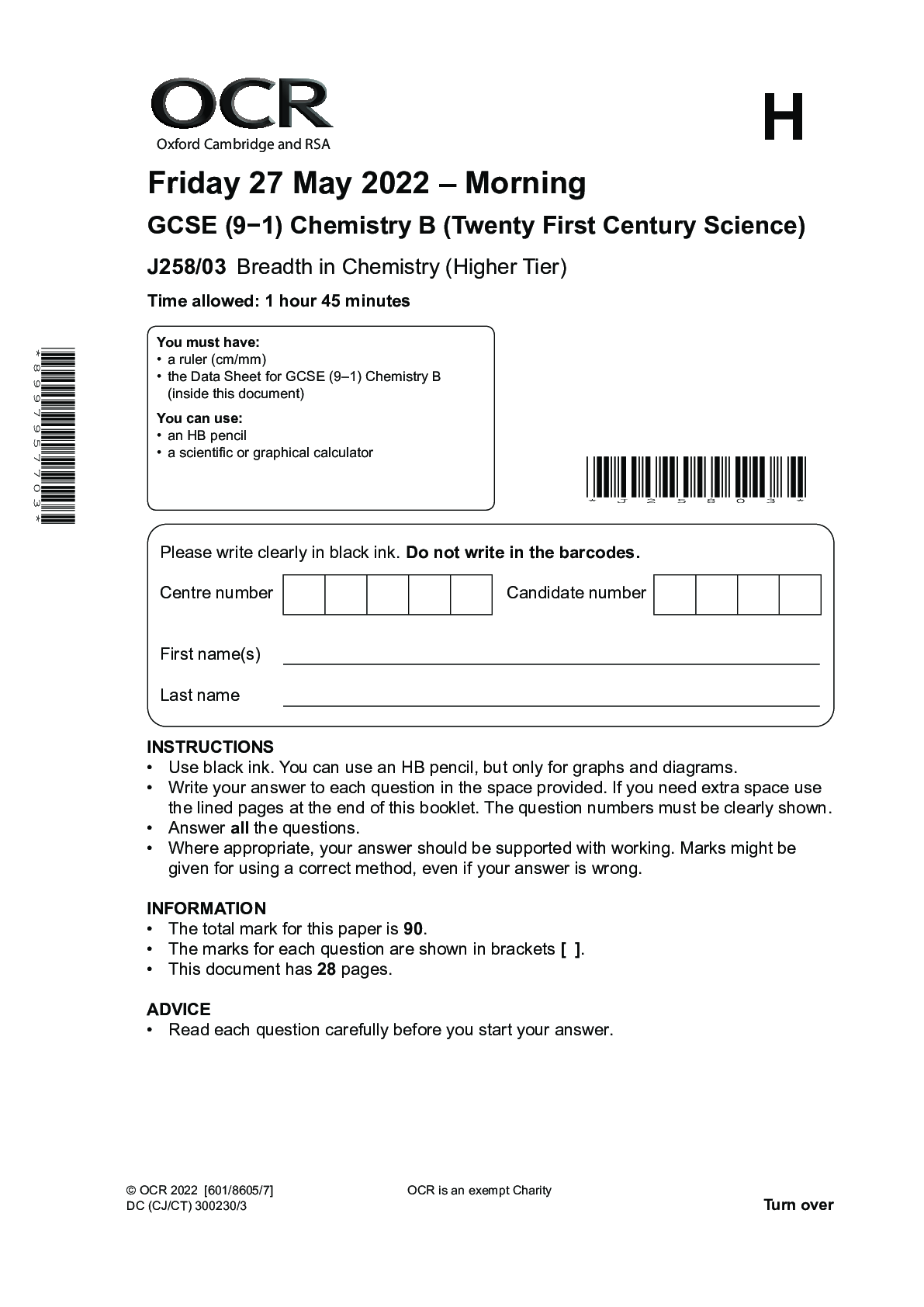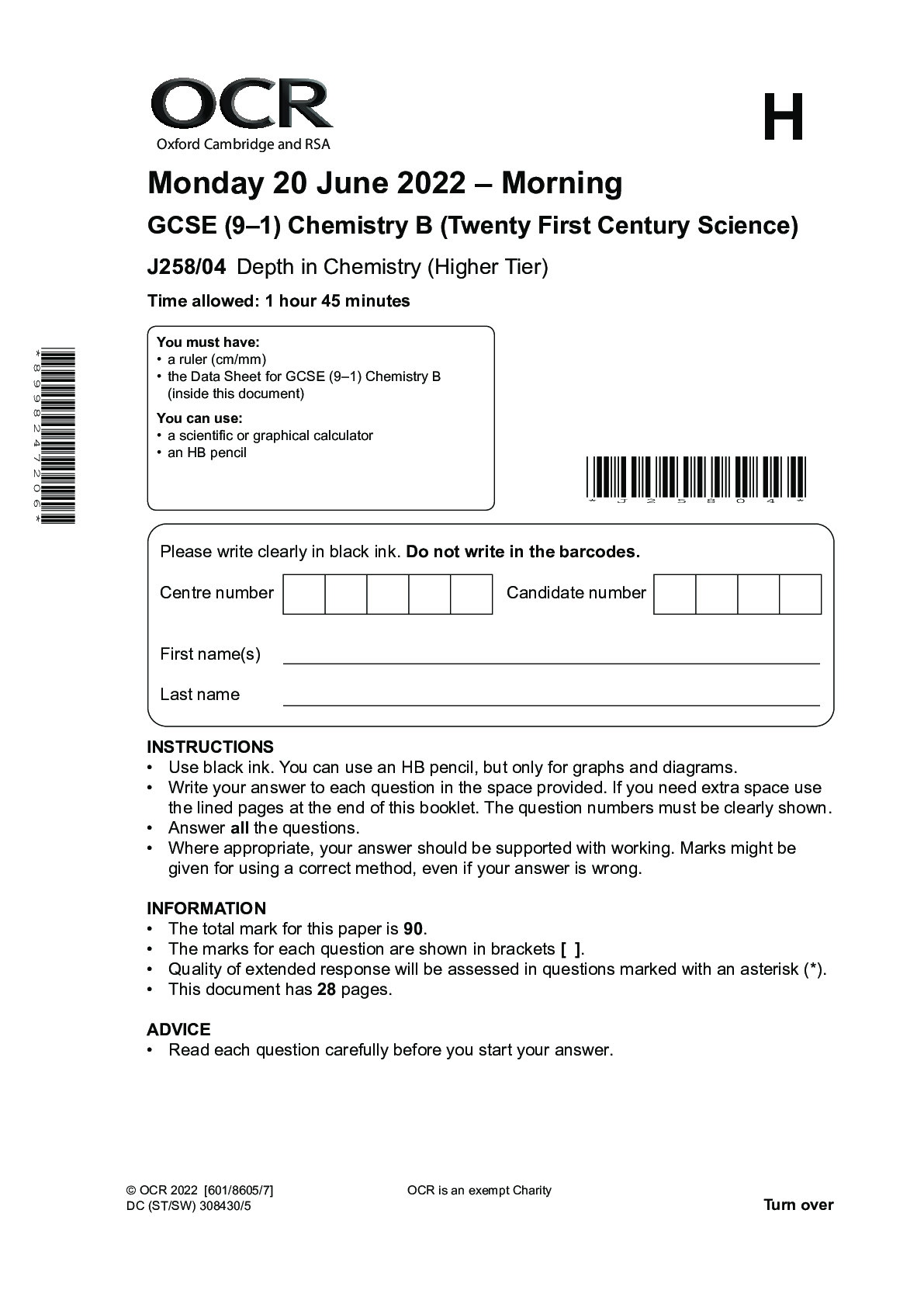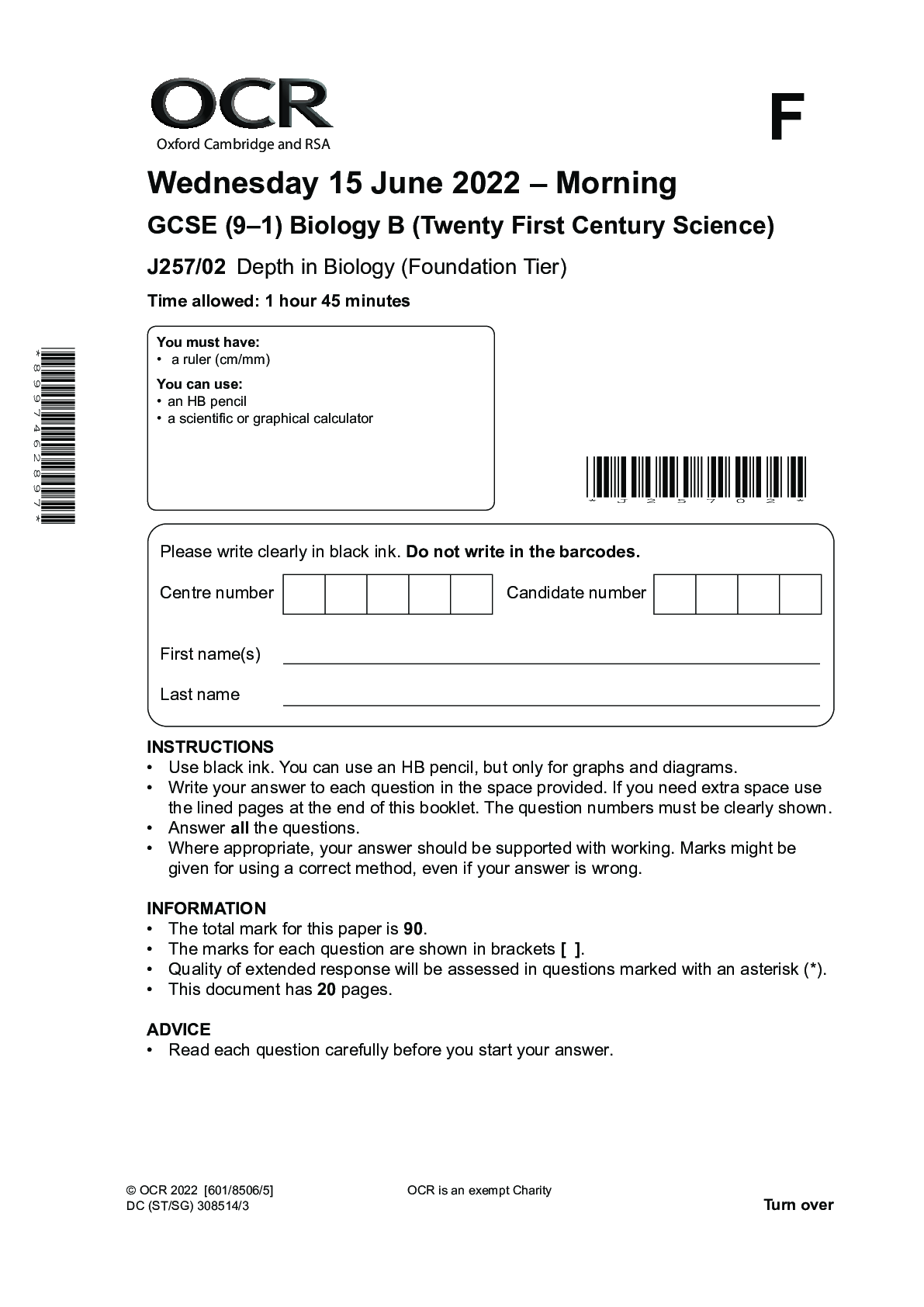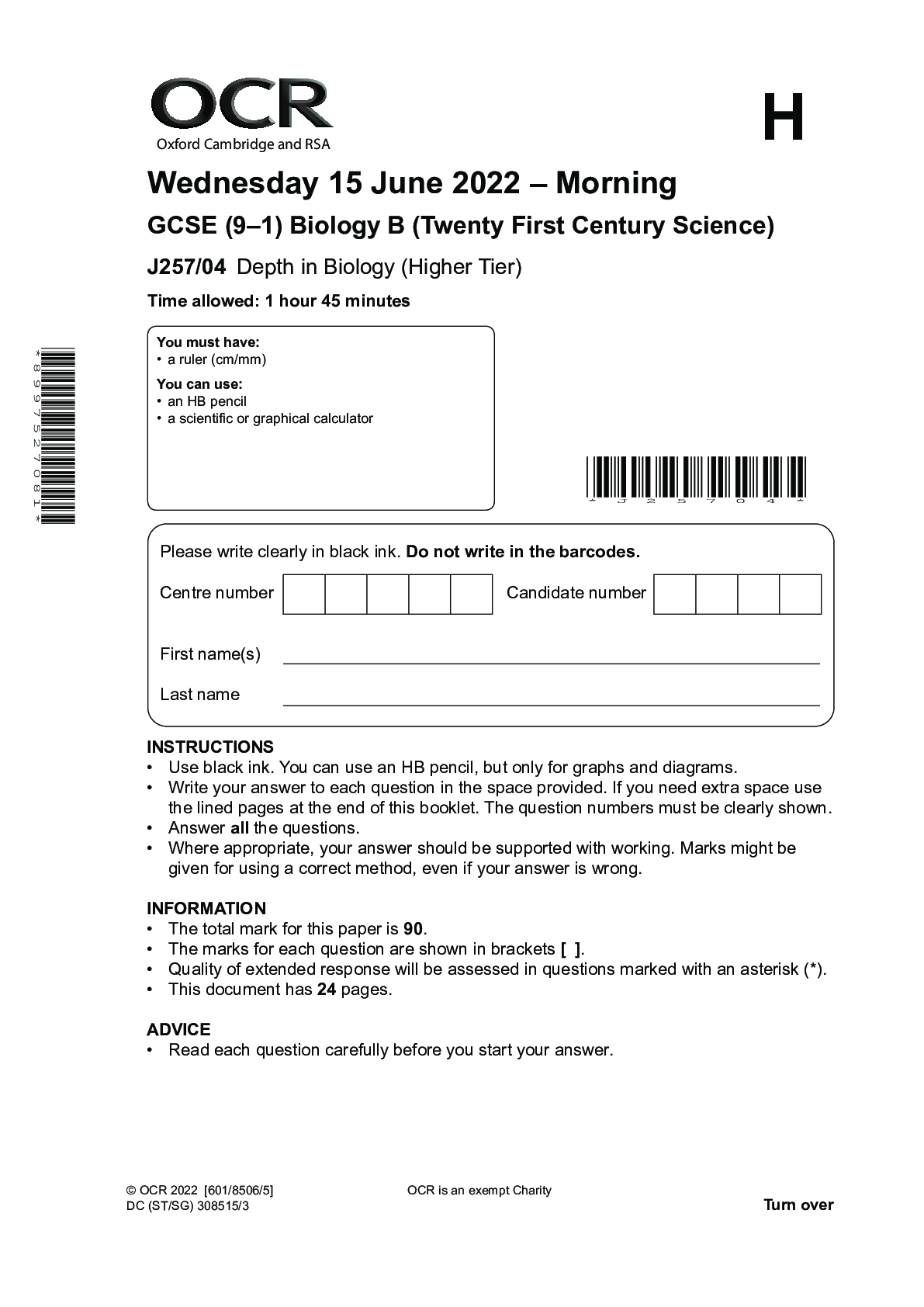Biology > QUESTION PAPER (QP) > OCR Oxford Cambridge and RSA Wednesday 15 June 2022 — Morning GCSE (9—1) Biology B (Twenty First (All)
OCR Oxford Cambridge and RSA Wednesday 15 June 2022 — Morning GCSE (9—1) Biology B (Twenty First Century Science) J257102 Depth in Biology (Foundation Tier) Time allowed: 1 hour 45 minutes
Document Content and Description Below
INSTRUCTIONS • Use black ink. You can use an HB pencil, but only for graphs and diagrams. • Write your answer to each question in the space provided. If you need extra space use the lined page... s at the end of this booklet. The question numbers must be clearly shown. • Answer all the questions. • Where appropriate, your answer should be supported with working. Marks might be given for using a correct method, even if your answer is wrong. INFORMATION • The total mark for this paper is 90. • The marks for each question are shown in brackets [ ]. • Quality of extended response will be assessed in questions marked with an asterisk (*). • This document has 20 pages. ADVICE • Read each question carefully before you start your answer. You must have: • a ruler (cm/mm) You can use: • an HB pencil • a scientific or graphical calculator *J25702* *8997462897* © OCR 2022 [601/8506/5] DC (ST/SG) 308514/3 Wednesday 15 June 2022 – Morning GCSE (9–1) Biology B (Twenty First Century Science) J257/02 Depth in Biology (Foundation Tier) Time allowed: 1 hour 45 minutes 2 © OCR 2022 Answer all the questions. 1 The circulatory system transports substances around the human body in the blood. (a) State the name of the organ that pumps blood around the human body. .............................................................................................................................................. [1] (b) Draw lines to connect each type of blood vessel with its correct description. Vessel Description Artery Has a thick, muscular wall to hold high pressure blood Capillary Has a thin elastic wall that enables the vessel to be squashed Vein Has a very thin wall only one cell thick [2] (c) State two nutrients that are absorbed into the blood in the digestive system. 1 ............................................................. 2 ............................................................. [2] (d) State two gases that are exchanged between the air and the blood in the gaseous exchange system. 1 ............................................................. 2 ............................................................. [2] 3 © OCR 2022 Turn over 2 The diagram shows a woodland food web. Owl Woodlouse Mouse Rabbit Apple tree Fox Wolf (a) Complete the sentences to describe the organisms in the food web. Use the phrases in the list. a community a population an ecosystem an individual One rabbit is ................................................................. . All of the rabbits in the woodland are ................................................................. . All of the organisms in the woodland are ................................................................. . All of the organisms and their environment are ................................................................. . [4] (b) State one example of an organism in the first trophic level of the woodland food web. .............................................................................................................................................. [1] (c) State one example of a producer in the woodland food web. .............................................................................................................................................. [1] (d) How many trophic levels does the longest food chain in the woodland food web have? Number of trophic levels ........................................................... [1] (e) State one example of an organism that is in more than one trophic level in the woodland food web. .............................................................................................................................................. [1] 4 © OCR 2022 3 Antibiotics are used to treat some diseases. (a) Beth has influenza. Which two statements explain why antibiotics will not cure Beth’s influenza? Tick (3) two boxes. Antibiotics do not work against bacteria. Antibiotics do not work against viruses. Bacteria can become resistant to antibiotics. Beth’s influenza was caused by a virus. Beth’s influenza was caused by bacteria. Influenza mutates quickly. [2] (b) Leo has cardiovascular disease. Explain why antibiotics will not help to cure Leo’s cardiovascular disease. ................................................................................................................................................... ................................................................................................................................................... ................................................................................................................................................... .............................................................................................................................................. [2] (c) Many bacteria have become resistant to antibiotics. Suggest why the spread of antibiotic-resistant bacteria is dangerous. ................................................................................................................................................... ................................................................................................................................................... ................................................................................................................................................... .............................................................................................................................................. [2] 5 © OCR 2022 Turn over (d) Information about four different antibiotics is given in Table 3.1. Antibiotic Year when antibiotic was discovered Year when bacteria resistant to the antibiotic appeared A: Carbapenems 1985 1993 B: Macrolides 1948 1985 C: Penicillin 1928 1940 D: Tetracycline 1948 1953 Table 3.1 (i) Which antibiotic had the shortest amount of time between the discovery of the antibiotic and the appearance of resistant bacteria? Tick (3) one box. Antibiotic A B C D Amount of time = ..................................................... years [2] (ii) Scientists can make changes to existing antibiotics. The scientists hope that it will take a long time for bacteria to develop resistance to the changed antibiotics. Which antibiotic in Table 3.1 is the best choice for scientists to make changes to? Tick (3) one box. Antibiotic A B C D Give a reason for your choice. Reason .............................................................................................................................. ........................................................................................................................................... [2] 6 © OCR 2022 (e) Fig. 3.1 shows the number of infections (rounded to the nearest 100) with antibiotic-resistant bacteria in England over five years. The data for two of the years have not been plotted. 13 000 14000 15000 16000 Number of infections with antibiotic-resistant bacteria 17000 18000 19000 2015 2016 2017 Year 2018 2019 Fig. 3.1 (i) The number of infections with antibiotic-resistant bacteria in 2016 was 14800. Plot the data for 2016 on Fig. 3.1. [1] (ii) Four students predict what the number of infections with antibiotic-resistant bacteria might have been in 2019. Their predictions are shown in Table 3.2. Student Prediction for 2019 Alex 23000 Amit 18600 Ling 16000 Taylor 17500 Table 3.2 Which student’s prediction do you think is most likely to be correct? Explain your answer. Student .............................................................................................................................. Explanation ....................................................................................................................... ........................................................................................................................................... ........................................................................................................................................... [3] 7 © OCR 2022 Turn over (f) Charlie investigates whether different antibiotics can affect the growth of a type of bacteria. The diagram shows the apparatus they use. Petri dish containing antibiotic Glass dropper Glass bottle Liquid containing bacteria Charlie places a drop of liquid containing the bacteria in the centre of each of four Petri dishes. Each Petri dish already contains a different antibiotic. The method Charlie uses is shown in Fig. 3.2. 1. Remove the lid from the Petri dish. 2. Remove the lid from the glass bottle containing bacteria. 3. Wipe the glass dropper with tissue to clean it. 4. Use the glass dropper to transfer a drop of liquid containing bacteria from the bottle to the centre of the Petri dish. Fig. 3.2 (i) Describe four ways to improve Charlie’s meth [Show More]
Last updated: 2 years ago
Preview 1 out of 20 pages

Buy this document to get the full access instantly
Instant Download Access after purchase
Buy NowInstant download
We Accept:

Reviews( 0 )
$8.00
Can't find what you want? Try our AI powered Search
Document information
Connected school, study & course
About the document
Uploaded On
Apr 03, 2023
Number of pages
20
Written in
Additional information
This document has been written for:
Uploaded
Apr 03, 2023
Downloads
0
Views
162

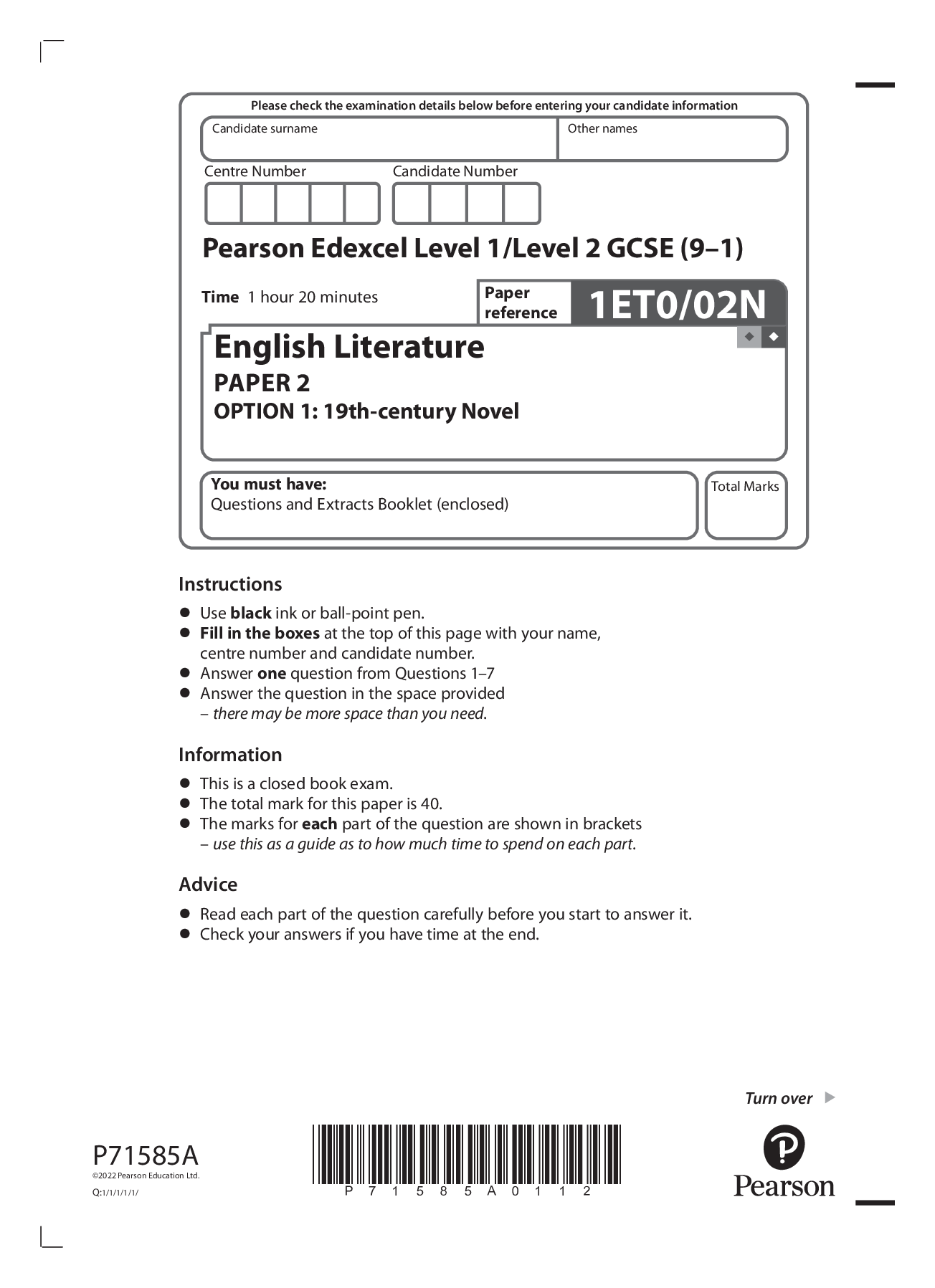
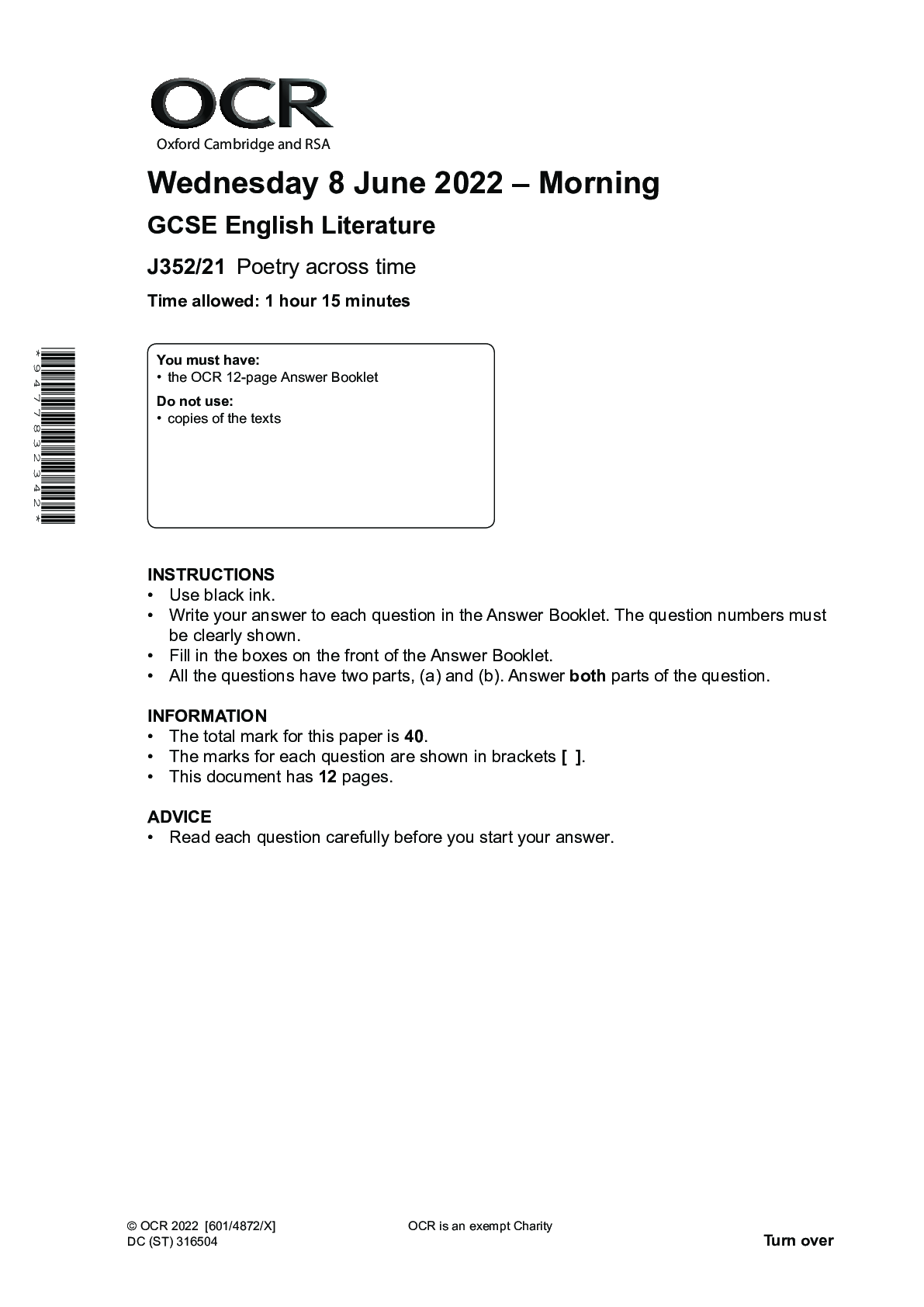
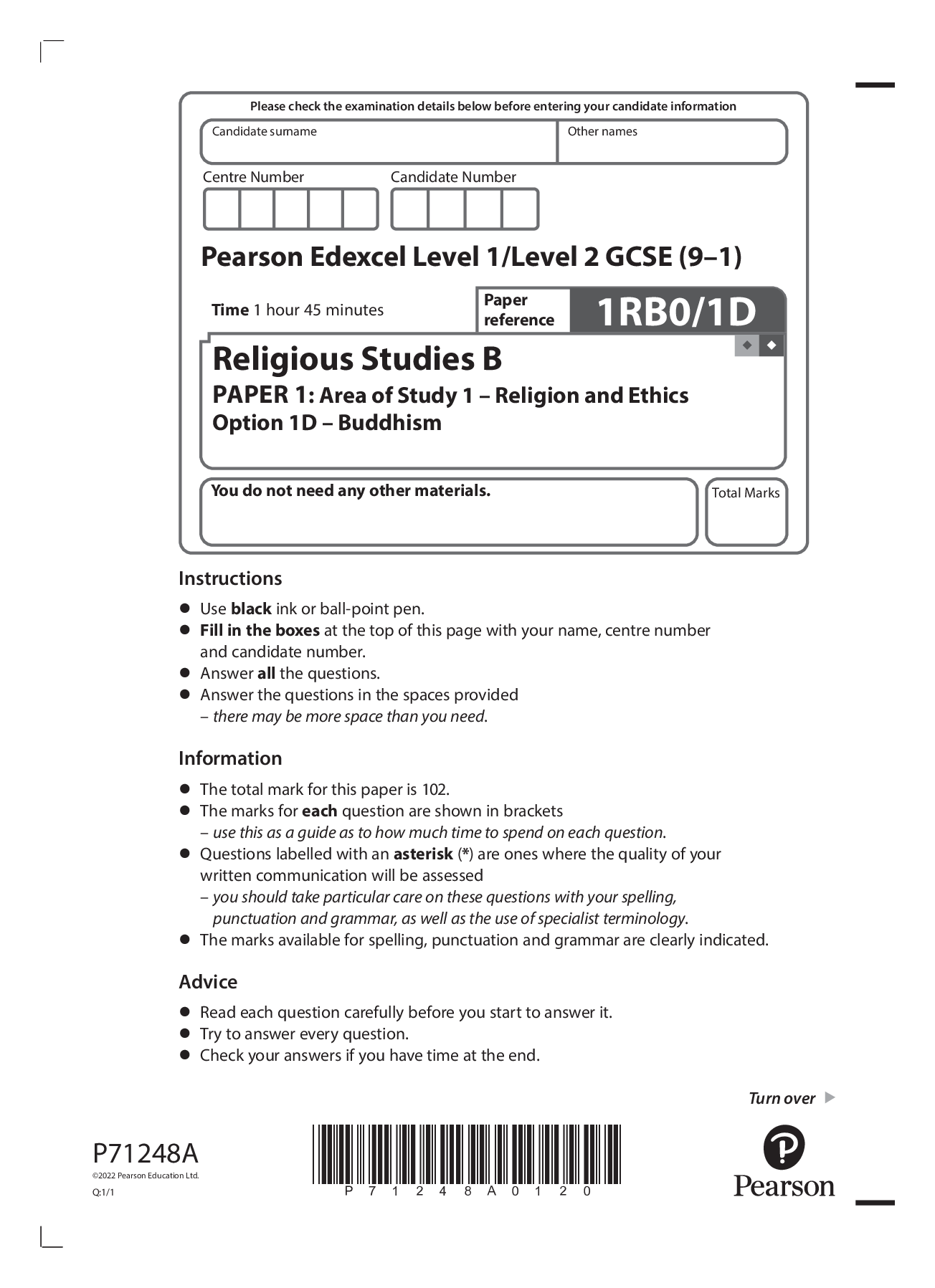
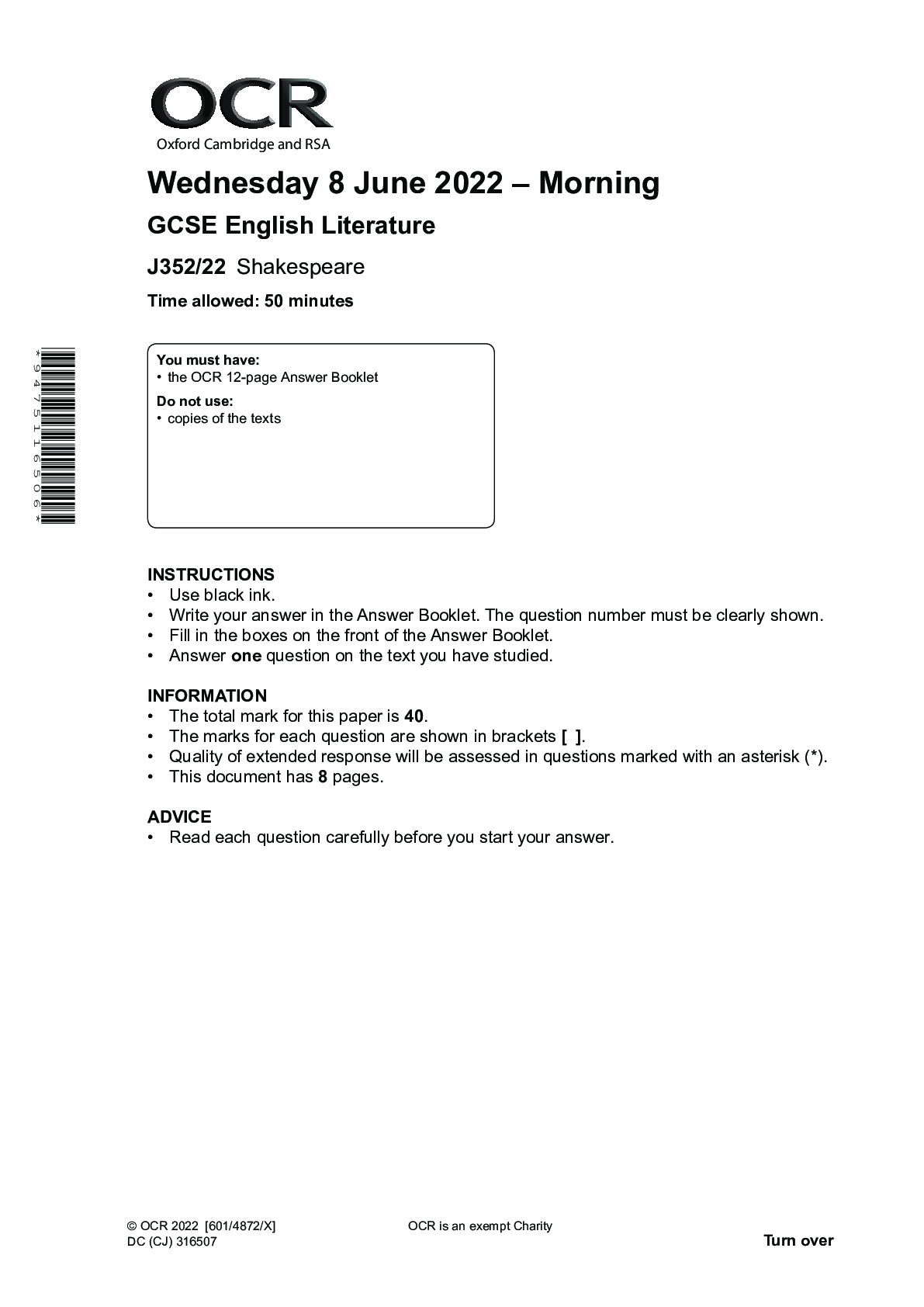
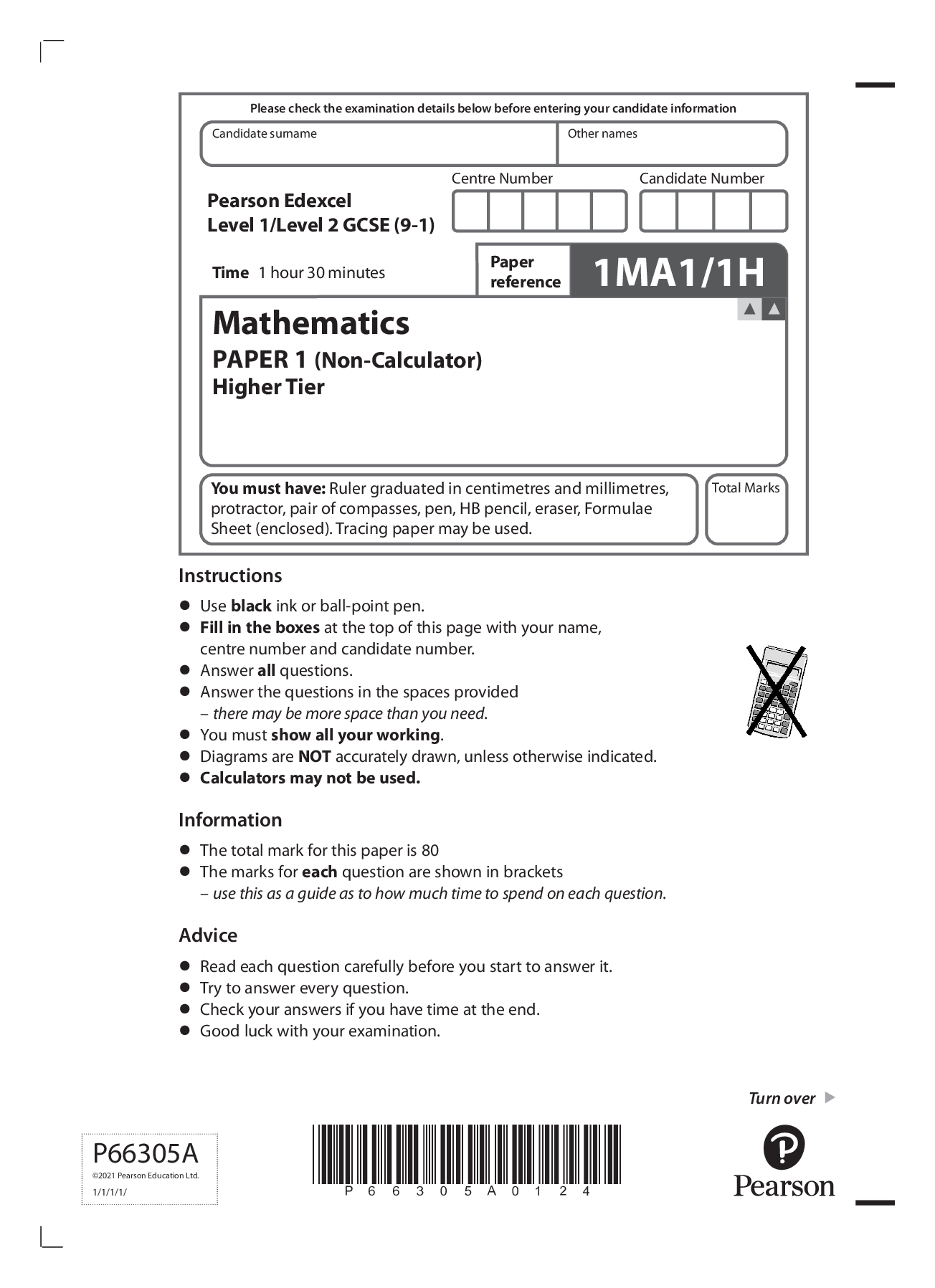
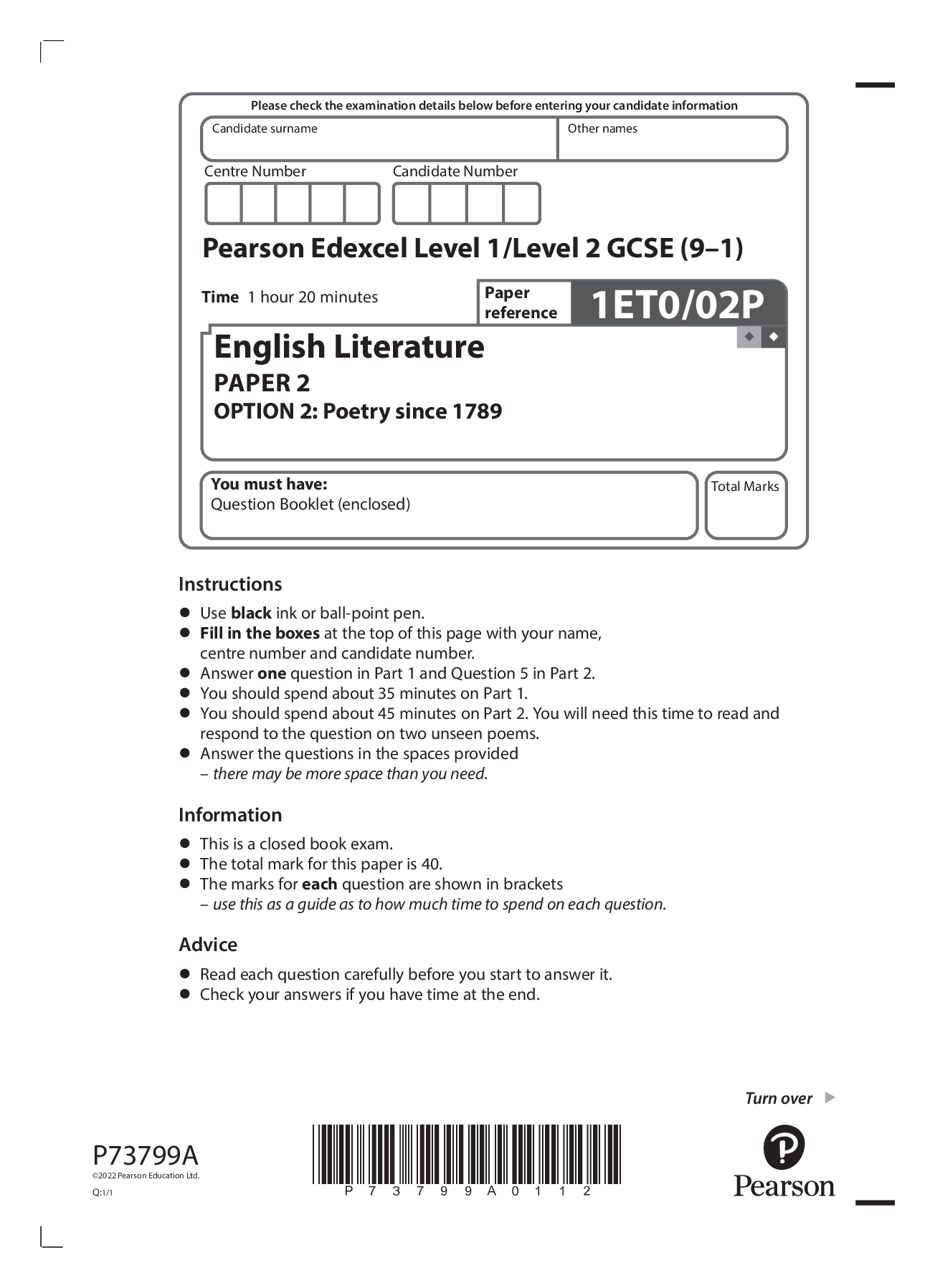
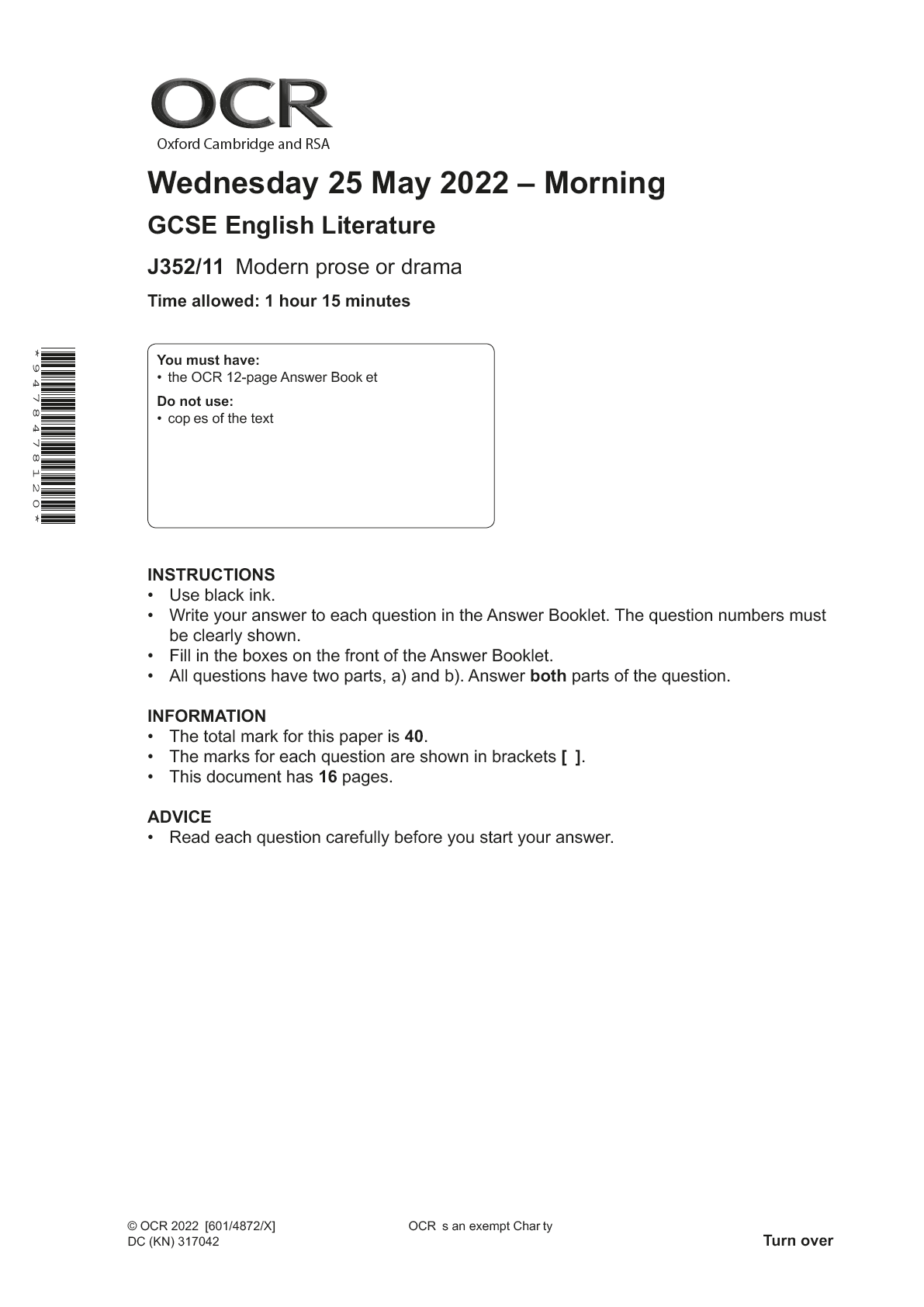
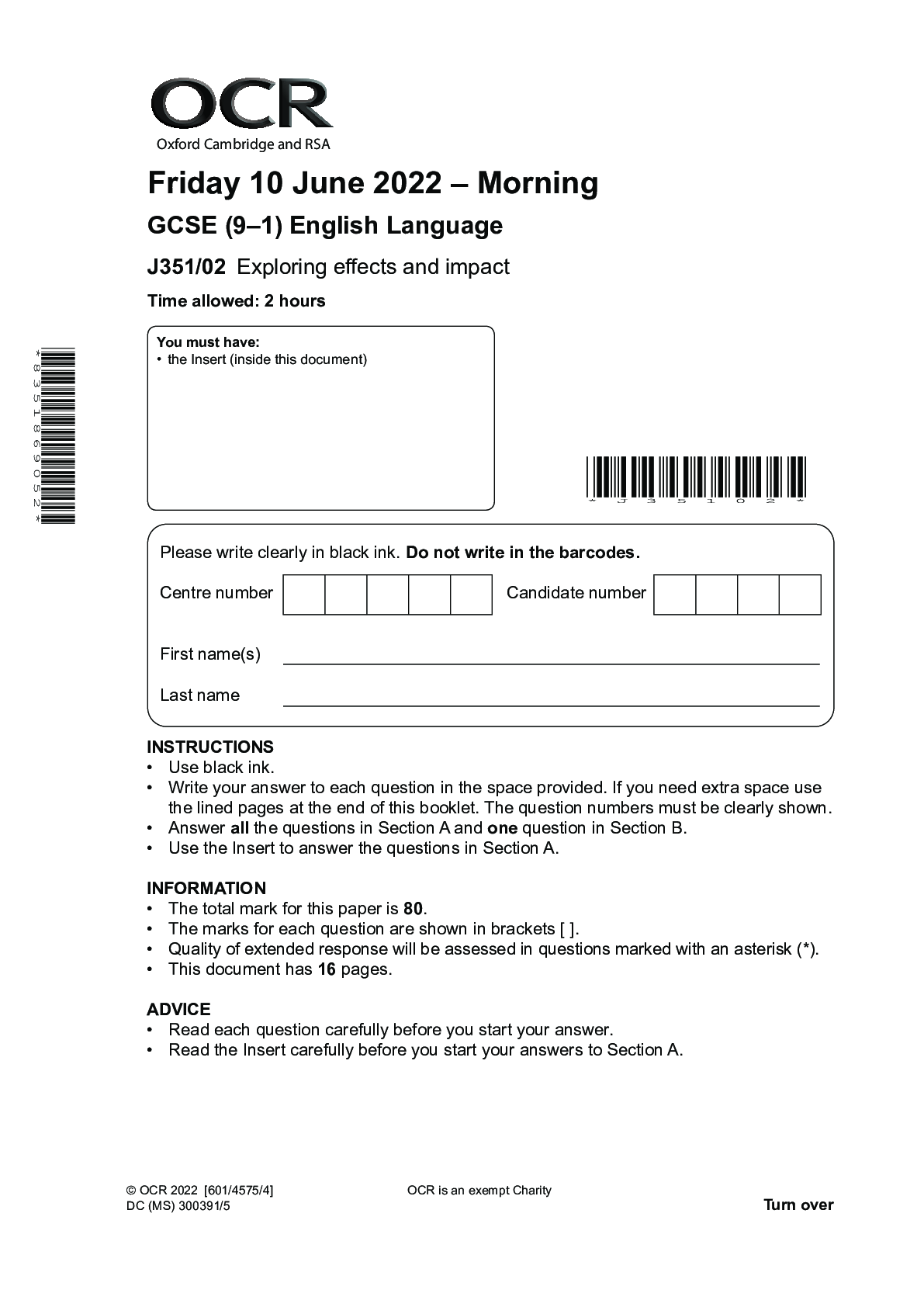
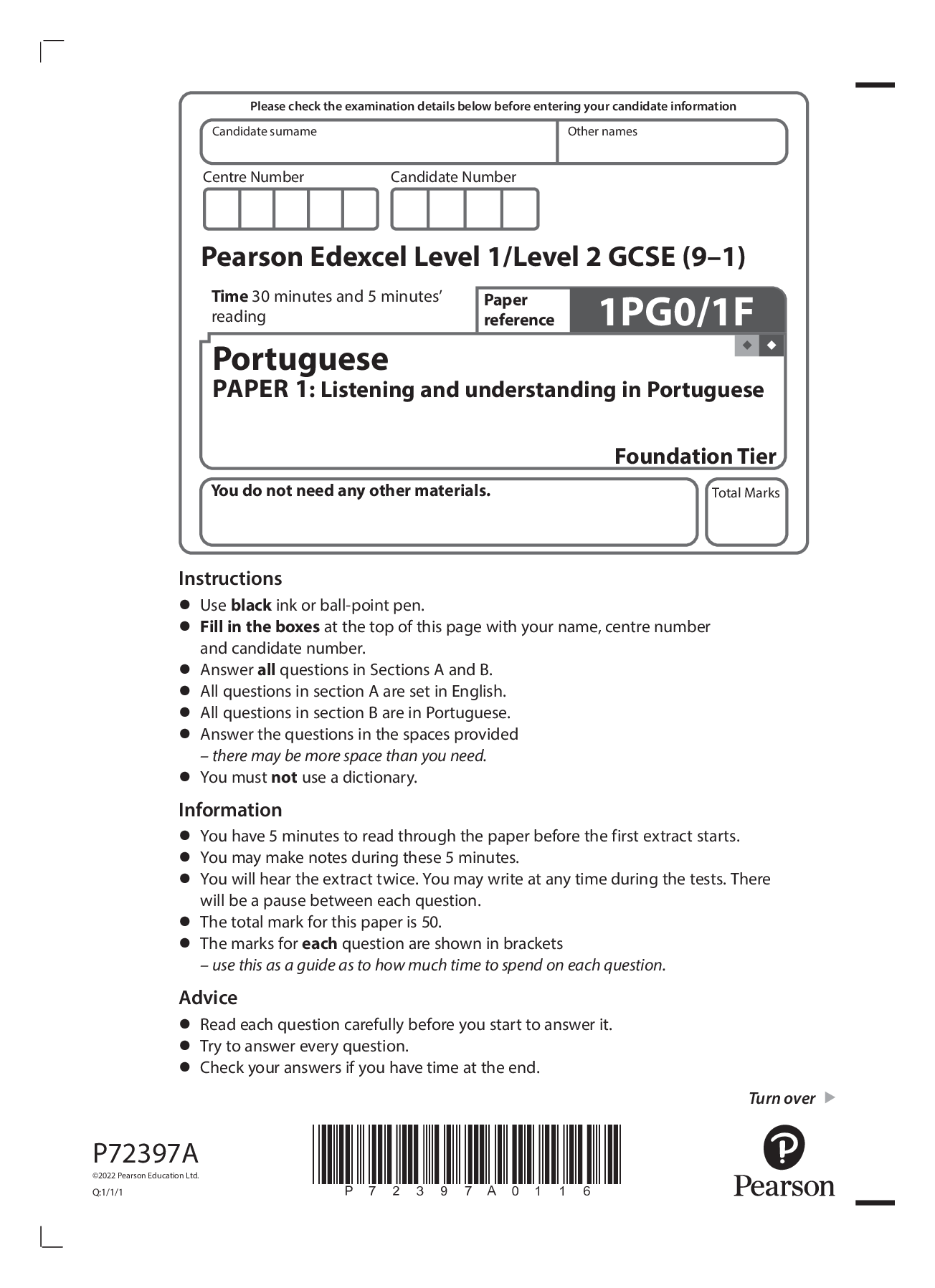
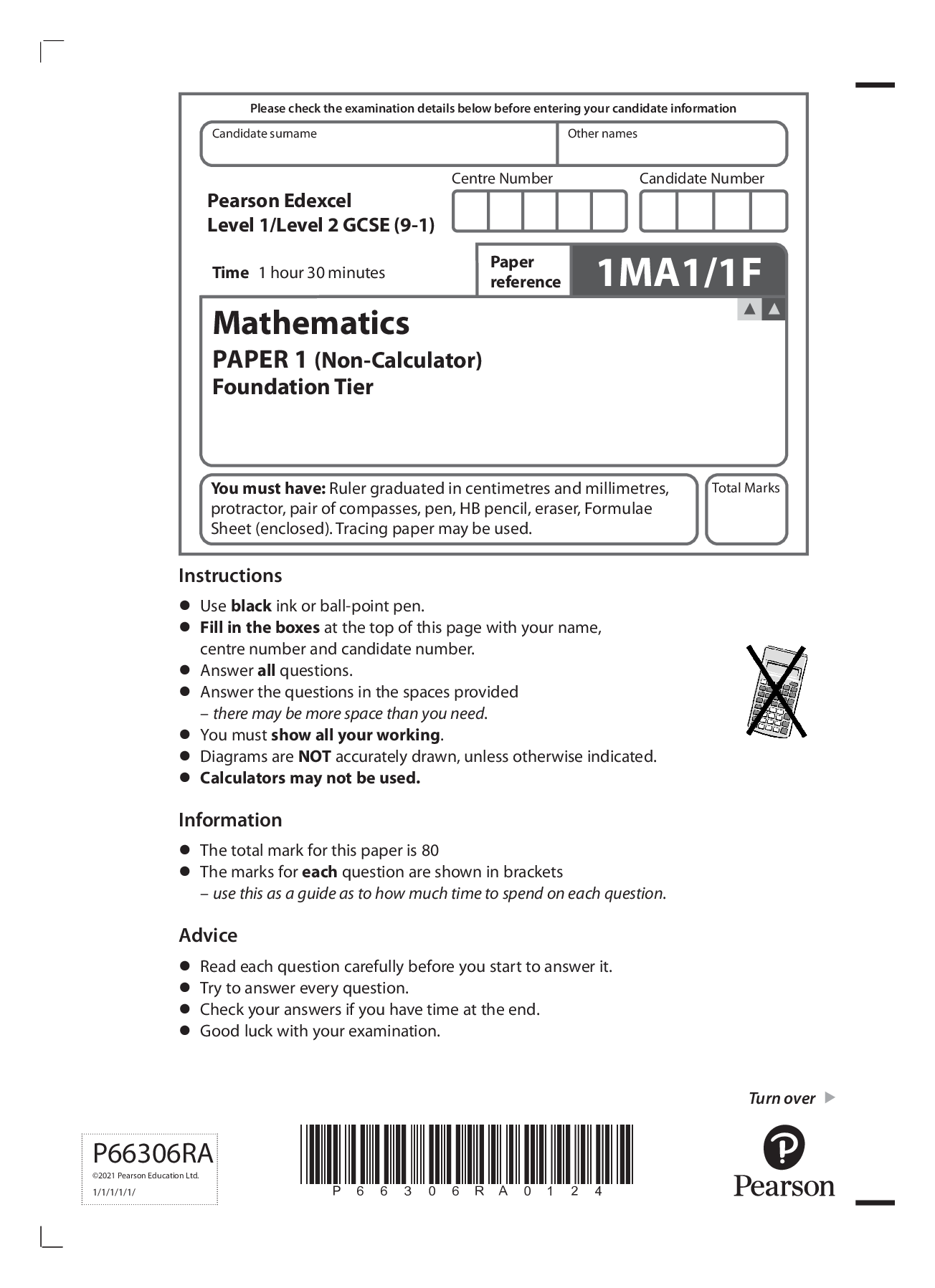
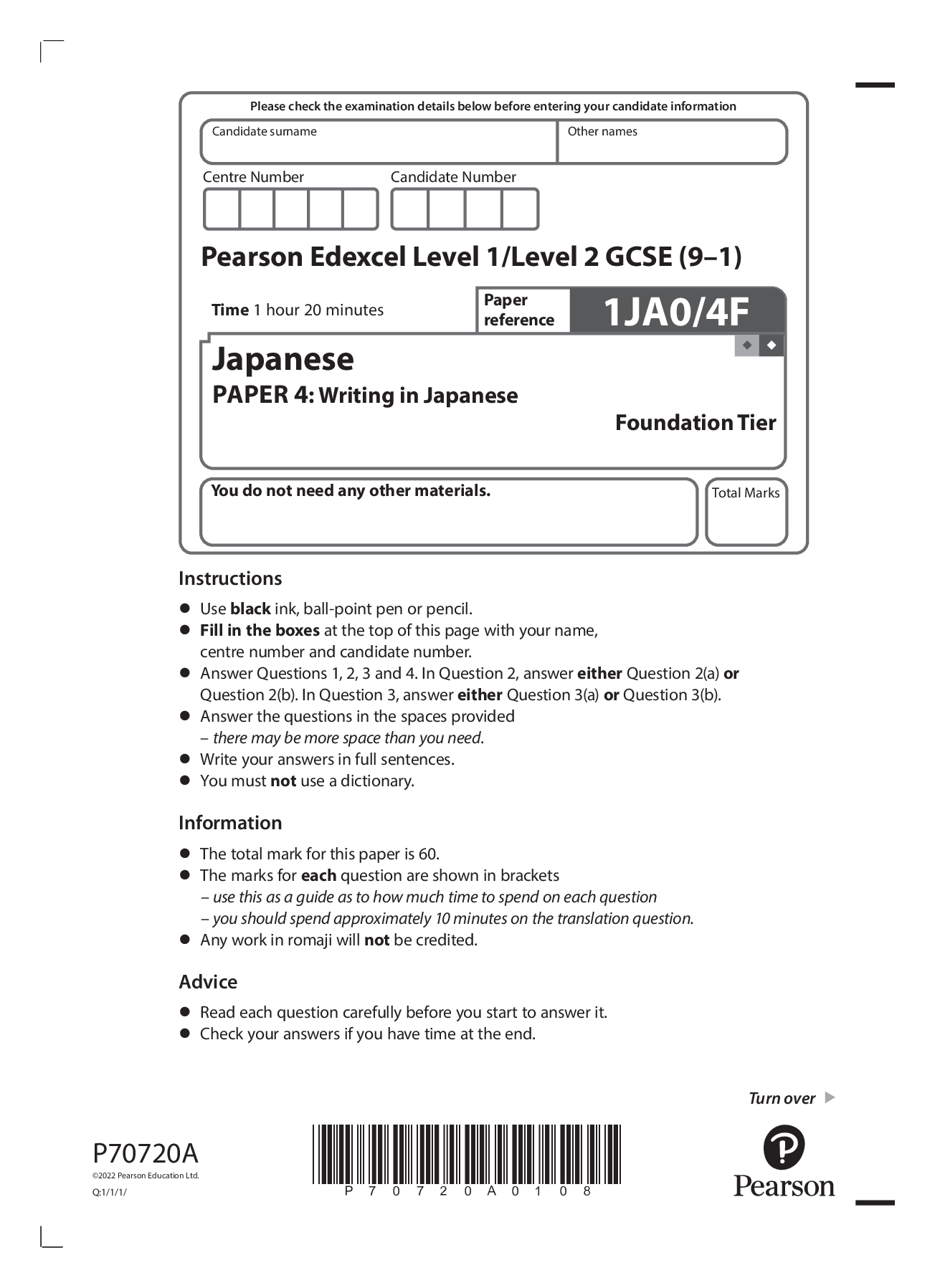
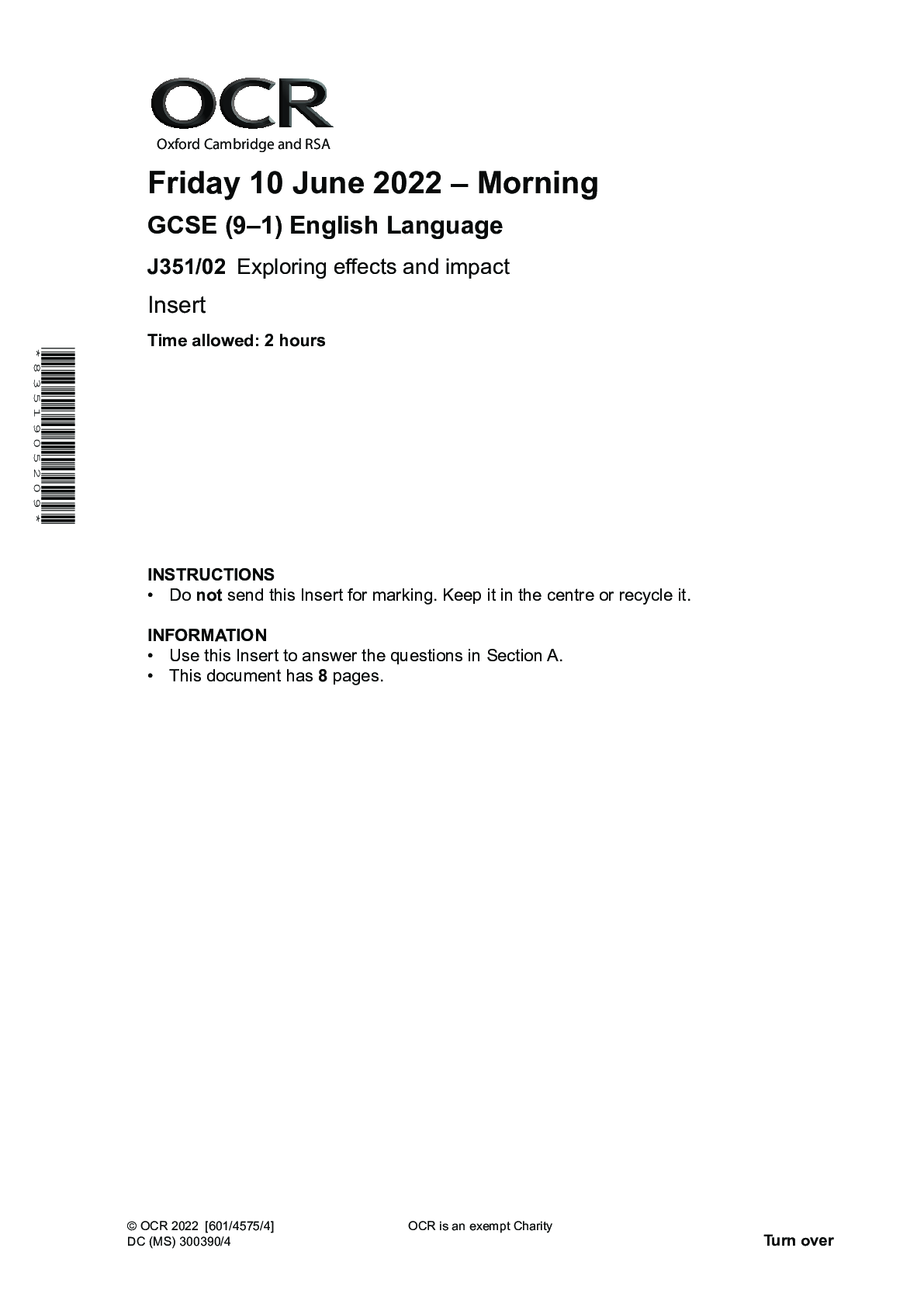
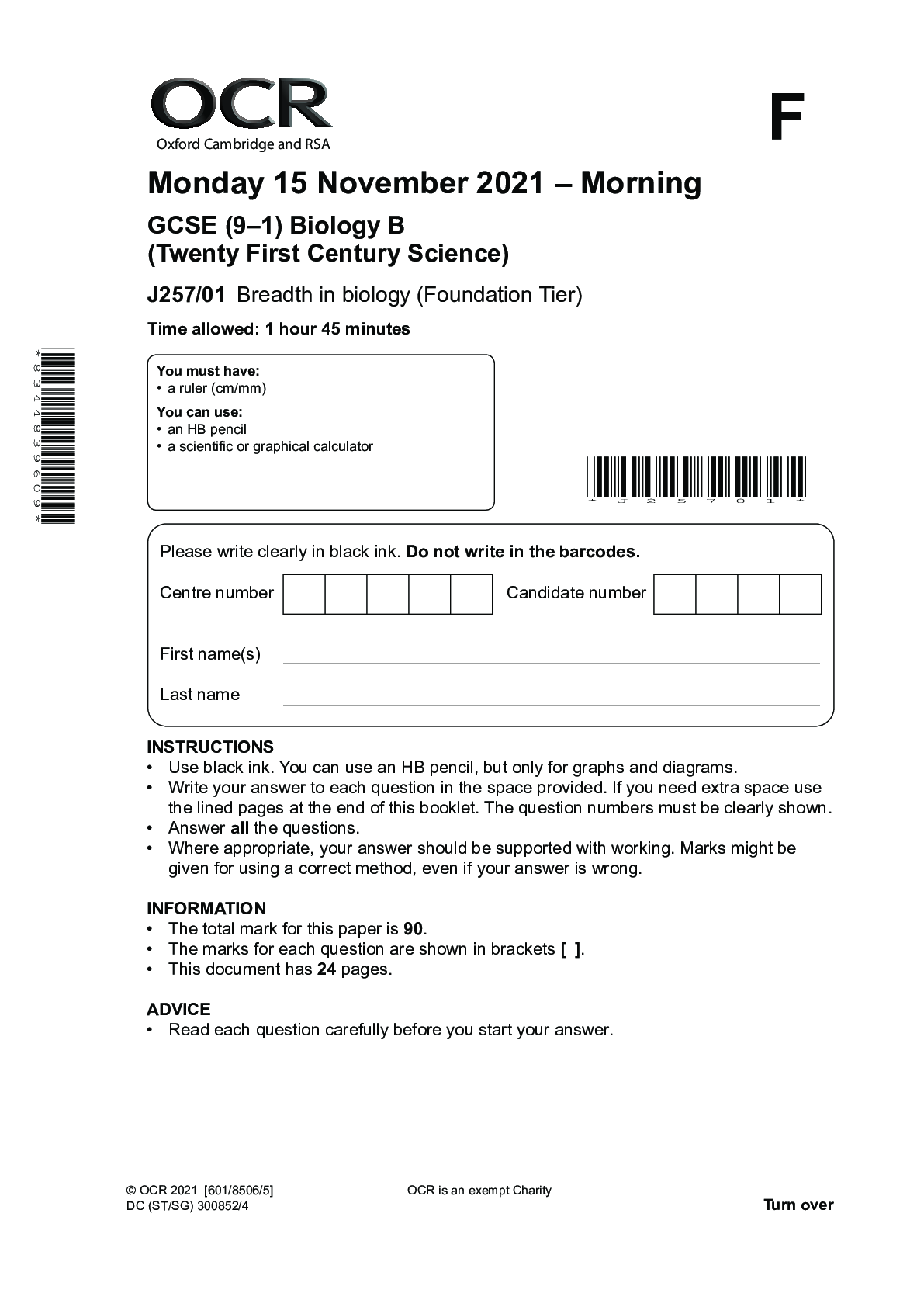
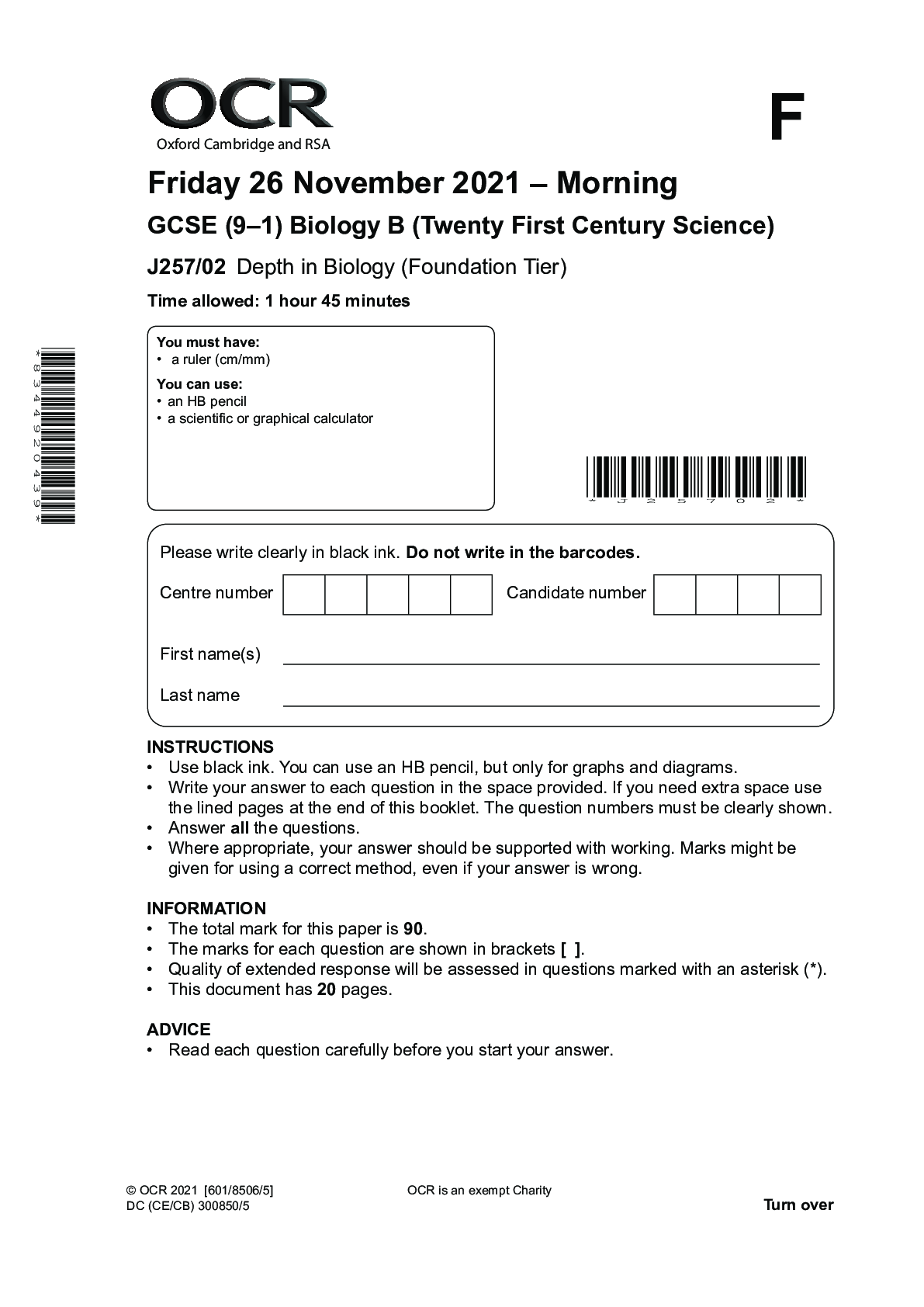


 Y421-01 Mechanics Major Wednesday 15 June 2022.png)

